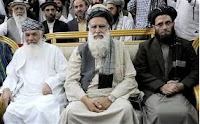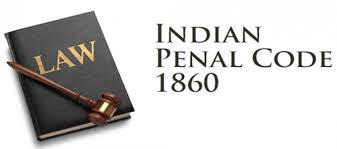Press note issued today on the occasion of the release of the report of the 'Peoples Commission' headed by Justice Katju at Chandigarh on March 26th, 2016
Press Note
Justice
Katju Commission of Enquiry was formed at the request of some Human
Rights organization to enquire into the incidents of 14th October,
2015 at village Behbal Kalan and Kokaputra, Faridkot, Punjab, in which two
persons were killed and several others injured due to Lathi Charge and Firing
by the Punjab police and property was damaged. Although the Punjab government
has also set up a commission of enquiry into the matter but there was general
lack of confidence in this ‘official commission’ and hence the request for the
formation of this ‘People’s Commission’. Thus, the purpose of this ‘Peoples
Commission’ is to investigate into the aforesaid incidents, record its findings
and put them in the public domain for the people to know the truth.
Behbal
Kalan Incident
Mr. Justice M. Katju, a former Justice of the Supreme
Court of India, the Chairman of the Commission,accompanied by a large number of
individuals as also members of Bhatinda Bar Association visited the spot of
Police Action at Behbal Kalan on 30th January, 2016 for site
inspection. Thereafter on 31st January, 2016, The Commission again visited
the said village and held its formal sitting in the premises of the local Gurudwara.
The Commission ensured that prior notices were issue to
authorities of the Punjab Government i.e. the Chief Secretary, Home Secretary
and D.G.P, inviting them to appear, either personally or through their
representatives, before the Commission but unfortunately, they neither
responded not any of their officials appeared before the commission. In the
morning of 31st January a notice was again sent to Sh. Amar Singh
Chahal, D.I.G. Faridkot who is also a member of the SIT formed by the State
Government to look into the matter. This procedure was adopted to strictly to comply
with the rules of natural justice, which requires that both sides should be
given opportunity to be heard. However, despite our giving ample opportunity,
no representative either of the State Government of Punjab or of the police
department appeared before us. The Commission was therefore constrained to
proceed in their absence. In course of the press conference held at Bhatinda,
on Feb 1, 2016), this Commission again announced that ‘doors’ of this
Commission shall remain open for about a week (till 7/02/2016). The Commission
delayed its report hoping that the Government will response but it is
unfortunate that despite subsequent telephonic enquiries from the office of the
Chief Secretary Punjab, no attempt has, till now been made by them to
co-operate with this Commission. It equally painful that despite it being an
open and shut case, the Commission appointed by the Punjab government has also made
no headway till now.
It is still more painful to note that no headway has
either been made in the deplorable, painful and shameful incidents of desecration
of Holy Shri Guru Granth Sahib at several places in the month of June 2015
Anyhow 37 witnesses presented their affidavits at Behbal
Kalan. Instead of merely relying upon the affidavits, these witnesses were thoroughly
examined before taking their testimony on record. Several other witnesses and
victims also chose to depose before the commission and were examined
accordingly. This process was adopted to ensure the credibility of witnesses
and not to accept their statements blindly.
All affidavits and statements were divided into three
broad categories to facilitate in-depth examination of each of them:
1-
Statements of relatives of those who had lost
their lives in the unfortunate incident of police firing.
2-
Statements of individuals who had received
bullet injuries in the said police firing.
3-
Statements of those individuals who received
blunt injuries in police lathi charge and whose property was destroyed in
police action. This category also includes persons who were target of police
action in any other related way and had directly suffered.
Following are the details under each of these heads:-
In the police firing of 14th October, 2015 two
persons namely Krishan Bhagwan Singh son of Mohinder Singh r/o V. Niamiwala and
Gurjit Singh son of Sadhu Singh r/o V. Sarawan were killed.
It is unfortunate that no follow up action was taken by
the authorities. However keeping in view public outrage a FIR No.130 dated
21.10.2015 was registered at P.S Baja Khana under Sections 302/307/34, &
25/27/54/59 Arms Act. This FIR was lodged on the basis of letter bearing No.318/PA/DIR/BOI
dated 21.10.2015 from the Director Bureau of Investigation-cum-Chairman Special
investigation Team Punjab, Chandigarh to the Senior Superintendent of Police
Faridkot. Unfortunately it appears that with a view to hush up the matter the
FIR names only some unknown persons as culprita. It also refers to an order
No.1306/Crime-E-3 dated 14.10.2015 of the Director General of Police, Punjab
declaring constitution of a Special Investigation Team headed by Sh. Iqbalpreet
Singh Sahota, IPS, Director Bureau of Investigation Punjab with Sh. Amar Singh
Chahal I.P.S D.I.G, Ferozepur Range Ferozepur and Sh. R.S. Khatra, IPS, D.I.G.
Bathinda Range Bathinda as members. The FIR further states that the SIT had ‘gone
to Faridkot’ on 16.10.2015 to take stock of the situation regarding firing at
village Behbal Kalan. No headway appears to have been made in the case. There
is no information regarding any progress or case diaries. There is hushed
silence from the side of the government.
Five persons
namely Harjinder Singh s/o Sh. Beant Singh r/o Gurusar, Gurcharan Singh s/o
Jarnail Singh of village Sarawan, Beant Singh s/o Balkaran Singh r/o V. Behbal
Khurd @ Niamiwala, Angrej Singh s/o Jugraj Singh r/o V. Behbal Kalan and Gurjit
Singh s/o Resham Singh r/o V. Behbal Kalan were injured in the police firing on
14.10.2015.
Those injured in the police firing as also in lathi
charge stated that the police action was unprovoked and sudden. The injured
included some women and even children who deposed vey vocally. It is shocking
that apparently there was no magistrate present on the occasion and this
formality was completed later on. Police is reported to have fired on unarmed
and peaceful congregation hiding behind the pillars of a brick structure used
as a bus shelter and also from behind a tractor trolley which was over turned
and used as a ‘Morcha’, a shield. It was like police was firing at an enemy
crowd. From the testimony of witnesses it further appears that the police party
which fired was led by Sh. Charanjit Singh, S.S.P. Moga and SHO Baja Khana.
There were some uncorroborated statements given by some
witnesses which claimed that the police action was ordered the moment some
mobile phone call to the S.S.P. ended. The timing of the call should be a matter
of record with the telecom company and taken cognizance there of by the
official commission.
This commission, as such, holds Punjab police guilty of
excessive and unprovoked action against a peaceful congregation and of using
brutal police force including lathi charge and firing without reason and
without the statutory magisterial orders which need to be passed on the spot
itself.
Since there is a lurking suspicion that the police action
was ordered following the telephonic orders from someone higher up who was
trying to controls the situation through remote control, this Commission would
like to quote the decision of the Supreme Court of India in the case of Parkash
Kadam Versus Ram Parkash Gupta (2011), in which it was held that a fake
encounter (read firing by implication) by the police even on direction of his
superiors amounts to murder and those police men who commit the crime may face
death penalty.
This Peoples Commission would also like to warn the
police and administration from using their pressurizing and intimidating
tactics to force people of Behbal Kalan and neighbouring areas ‘into
submission’.
Kot
Kapura Incident
Procedure adopted in respect of the Kot Kapura incident
was the same as in case of the Behbal Kalan. In case of Kot Kapura, unlike
Behbal Kalan, not too many persons came up for hearing / deposition. However
some prominent and well known Sikh religious leaders and pracharaks deposed on
free will and accord and got their statements recorded. They included Giani
Kewal Singh, a prominent Sikh scholar and religious leader, Bhai Panth Preet
Singh, a well known pracharak, Bhai Bhaktora Singh, Bhatinda, a well known Sikh
religious preacher and Satnam Singh S/o Mangal Singh, resident of village
Chander, Dist Ferozepur, Punjab.
In case of Kot Kapura incident aswell witnesses deposed
that the police action against the peaceful protestors was sudden and
unprovoked. In this case as well, despite written notices, no State or police
authority cared to appear before the Commission to provide their version. Circumstances,
circumstantial evidence and statements were enough to convince the Commission
of illegal and arbitrary nature of the police action. Police firing is an
extreme measure to be resorted to and that too only in very rare and exceptional
circumstances. This, the Commission feels, that the police action was totally
uncalled for and unjustifiable. We are living in democracy and people have
right to protest and assemble peacefully without arms as provided for in
Article 19 of the Indian Constitution. The crowd assembled at Kot Kapura was
also, like Behbal Kalan, unarmed and peaceful. They had neither committed any
violence nor threatened it. Therefore, it was just no occasion for the police
to resort to such an extreme step as firing with live bullets.
It has also been brought to the notice of this Commission
that the place where people had assembled peacefully and where uncalled for
police action was staged is under electronic surveillance from all sides. The
control room is located in the nearby police station. The C.C. T.V footage can
bring the truth out. This commission hopes that the police does not temper with
this important piece of evidence which may be called for in an appropriate
court of law or forum. This commission would as such warn the police not to
temper with this evidence and not to try pressurizing the witnesses, as has
been brought to the notice of this Commission.
In this case also, the Commission would like to quote the
earlier mentioned decision of the Supreme Court of India in the case of Parkash
Kadam Versus Ram Parkash Gupta (2011), in which it was held that a fake
encounter (read fake action, by way of implication) by the police even on
direction of his superiors amounts to murder and those police men who committed
the crime may face death penalty.































